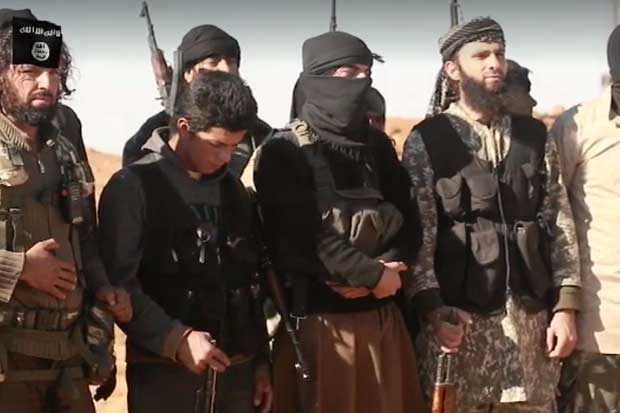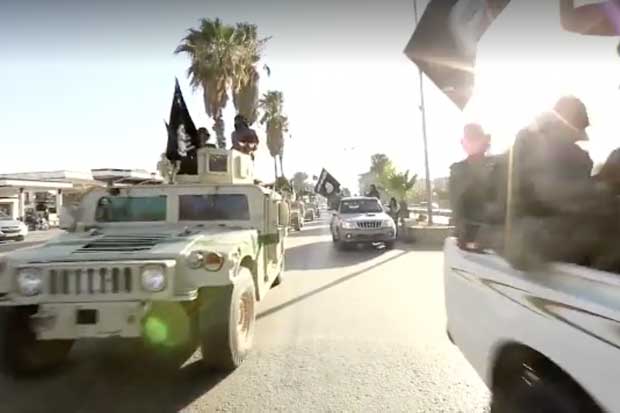A spectre is haunting Afghanistan, the spectre of the events in the Middle East. 15 years after the ousting of the Taliban regime as a consequence of the US invasion of the country, Afghanistan remains plagued with Taliban attacks, political instability, chronic levels of corruption, economic uncertainty, and an exodus of refugees.
Today, a new spectre looms over the horizon, and it brings with it the potential for a new wave of political-religious violence under the banner of the Islamic State of Iraq and Syria (ISIS), commonly known by its Arabic acronym DAESH.
Afghanistan has an abundance of religious extremist groups and a long history of political violence in the name of Islam, and for many anti-government Islamic extremist groups, the ISIS brand brings with it a renewed zeal for violence and quest for territory. They have failed to capture and keep any major cities or even district centres in their decade-and-a-half long insurgency under the Taliban flag.
In pledging allegiance to ISIS, they are hoping to change that, attract new supporters, funds and earn a bigger name. The swift rise of ISIS across northwest Iraq and northeast Syria has inspired extremists in Afghanistan to reassess and redirect their tactics towards a grander show of force that combines political-religious zealotry, with sectarianism and a brutish public display of violence as their modus operandi.
Reports of ISIS activities and attacks in Afghanistan first surfaced in September 2014 when alleged ISIS militants launched an offensive in the Ajrestan district of the southern province of Ghazni, which has been a hot-bed of the Taliban insurgency. There, they beheaded 15 family members of local police officers, and set 60 homes ablaze.
In January 2015, Afghan media outlets reported that an influential Taliban commander in the Helmand province, Mullah Rauf Khadim had pledged allegiance to ISIS, and was campaigning to recruit locals.

Mullah Khadim had commanded the Taliban regime’s elite mobile reserve force. The US had sent Khadim to Guantanamo Bay in 2001, and he was released in 2007. Khadim’s followers, ISIS foot soldiers, had reportedly clashed with the Taliban over the control a checkpoint in the Kajaki district of Helmand.
The Afghan government, which has never controlled vast swathes of the province, swiftly denied the reports. It claimed that there were “no signs that the group (ISIS) has infiltrated in the country”. Their denial was short-lived. On February 9, Afghan and U.S. officials announced that Mullah Khadim, ISIS’s “top recruiter” in Afghanistan had been killed in a drone strike.
In the same period, a jihadist video surfaced online showing a group of militants announcing that “10 insurgent commanders” from Pakistan and the Afghan provinces of Kunar, Logar and Ningarhar had pledged allegiance to ISIS.
Among the prominent names is Shahidullah Shahid of the Tehreek Taliban Pakistan, a Pakistani offshoot of the Taliban, which has been responsible for much of the anti-state violence in Pakistan, and border area attacks in Afghanistan.
What has made the ISIS attacks distinct in the relatively short period of their existence in Afghanistan has been a string of kidnappings and beheadings of ethnic Hazaras, who adhere to the Shi’ite branch of Islam. While this brand of targeted sectarian violence has been the hallmark of the events in Syria, and Iraq, its scale and frequency makes it relatively new to Afghanistan.
ISIS Attacks on Hazaras
On 23 February this year, armed masked men stopped a bus carrying passengers returning from Iran along the country’s main highway in the southern province of Zabul. The masked men segregated Shi’ites from Sunnis, and abducted 31 men, a majority of them Hazaras.
This pattern is similar to another attack last year in which gunmen took 15 Hazaras out of the vans they were travelling in, lined them up and killed them execution style.
Mohammad Mohaqqeq, deputy to the Chief Executive Officer Abdullah Abdullah, has since confirmed that militants belonging to ISIS have kidnapped the 31 men. The kidnapped men haven’t been recovered yet, and their plight has been the subject of international protests by the Hazara diaspora, including rallies here in Australia.
Three weeks later, 10 more Hazara passengers were taken as they travelled from Jaghori district to Ghazni province. All but one were later released.
Days later, on 17 March, at least six more Hazara passengers were segregated and taken away by armed men on the Herat-Farah highway in Western Afghanistan. Their fate remains unknown.
In early April, a road-side bomb ripped through a passenger van in Ghazni province, killing 13 Hazara passengers, including women and children.
On 15 April, ISIS militants kidnapped five Hazara farmers in Ghazni’s Ajrestan district. Three days later they were found beheaded along with six other Hazara men from the neighboring Daikundi province.
It is important to note that the attacks targeting Hazaras is only one aspect of the ISIS surge in Afghanistan. They, along with the Taliban, have been blamed for a string of deadly attacks on government and civilian targets across the country. This has added to an already deadly cycle of violence that claims more and more lives every year.
On Saturday last week, a suicide bomb tore through a crowded Kabul Bank branch in the eastern city of Jalalabad. 35 people were killed, 125 wounded. While initially fingers were pointed at the traditional perpetrators of such attacks – Taliban and the Pakistan-based Haqqani network, Afghan president Ashraf Ghani was quick to blame ISIS for the attack. As horrendous as the attacks were, the ISIS involvement plays well into Ghani’s strategy of cozying up to the Taliban, in the hope of some sort of political settlement with the movement.
The Future of ISIS in Afghanistan
It is too early to tell how much of a foothold ISIS can gain in Afghanistan, far away from its heartland between the Euphrates and the Tigris. At present, the group brings a new brand, new tactic and an openly sectarian dimension to the war in Afghanistan. However, its biggest obstacle is not the threat of counter initiative from the relatively defenseless Hazaras. It’s biggest challenge in gaining a foothold in Afghanistan will come from the established insurgent Islamic extremist groups such as the Taliban, Hezb-e Islami, and the Haqqanis.

The ISIS leadership, its heartland, and support structure remain in the Middle East. It lacks popular indigenous leadership, an established resource network such as the camps in Pakistan producing recruits and funds for the Taliban. It also lacks regional patronage, such as the backing of Pakistani military and intelligence service that is available to the Taliban.
The Taliban’s brand of Islamist ideology has always referred to Afghanistan as the Islamic emirate, a distinctly local and regional political entity that is in contrast to the transnational aspirations of a caliphate that is envisioned by ISIS.
Except during the brief period of the Islamic conquest in the seventh and eighth century, the territories that make-up today’s Afghanistan have never been a part of the greater Islamic caliphate. As such, the ISIS narrative and objective of turning the country into a province of the caliphate remains alien to Afghanistan’s political history.
The rise of ISIS in the Middle East has been partly a reaction to the secular dictatorship in Syria, and Shiite political domination in both Syria and Iraq. In contrast, Afghanistan remains an Islamic Republic. Its judicial system is based on both the Sunni and Shiite jurisprudence.
The constitution of Afghanistan explicitly declares Islam as the “religion of the state” and that “no law can be contrary to the beliefs and provisions of the sacred religion of Islam”. The ISIS narrative of Islam being disenfranchised from the national politics might earn some support in Syria, but it’s unlikely to have an impact in Afghanistan.
However, the two groups do have much in common. The ISIS tactics of mass executions, persecution of ethnic and religious minorities, destruction of pre-Islamic cultural heritage, scorched-earth battle tactics against rival communities and many more acts of brutality have all been tried and tested by the Taliban since its birth in 1994.
Both the Taliban and ISIS have fully exploited the chaos and power-vacuum created as a direct consequence of Western policies in Afghanistan and Iraq respectively. The rise of the Taliban, and its take-over of more than 90 per cent of Afghanistan, was in the aftermath of anti-Soviet jihad, the brutal civil war, and the absence of a state entity in the post-Soviet withdrawal from Afghanistan.
The rise of ISIS came about in the aftermath of myopic US policies in Iraq, which, after toppling the Baathist regime, disenfranchised the Sunnis, allowed for Shiite domination of the political scene, and a brutal state of Shiite-Sunni civil war.
ISIS’ emergence is particularly alarming in the context of an emerging picture that Iran has been recruiting and sending hundreds, perhaps thousands of Hazaras refugees from Iran to fight its proxy war in Syria, in exchange for money, and the promise of residency permits.
It is possible that some of these fighters will bring back from Syria, their flare of Shiite extremism to Afghanistan. There is a growing potential for an all out sectarian conflict in Afghanistan, and that’s the real ISIS threat to Afghanistan.
ISIS is unlikely to become a mainstream political player in Afghanistan, but it is already a significant fringe group. From the fringes, it has the potential to exacerbate the already unstable state of affairs.
Such a situation will again turn the country into a battleground of regional powers, and roll back any and all progress made in the post-Taliban Afghanistan, creating a new wave of victims and refugees, and another humanitarian disaster.
Donate To New Matilda
New Matilda is a small, independent media outlet. We survive through reader contributions, and never losing a lawsuit. If you got something from this article, giving something back helps us to continue speaking truth to power. Every little bit counts.



